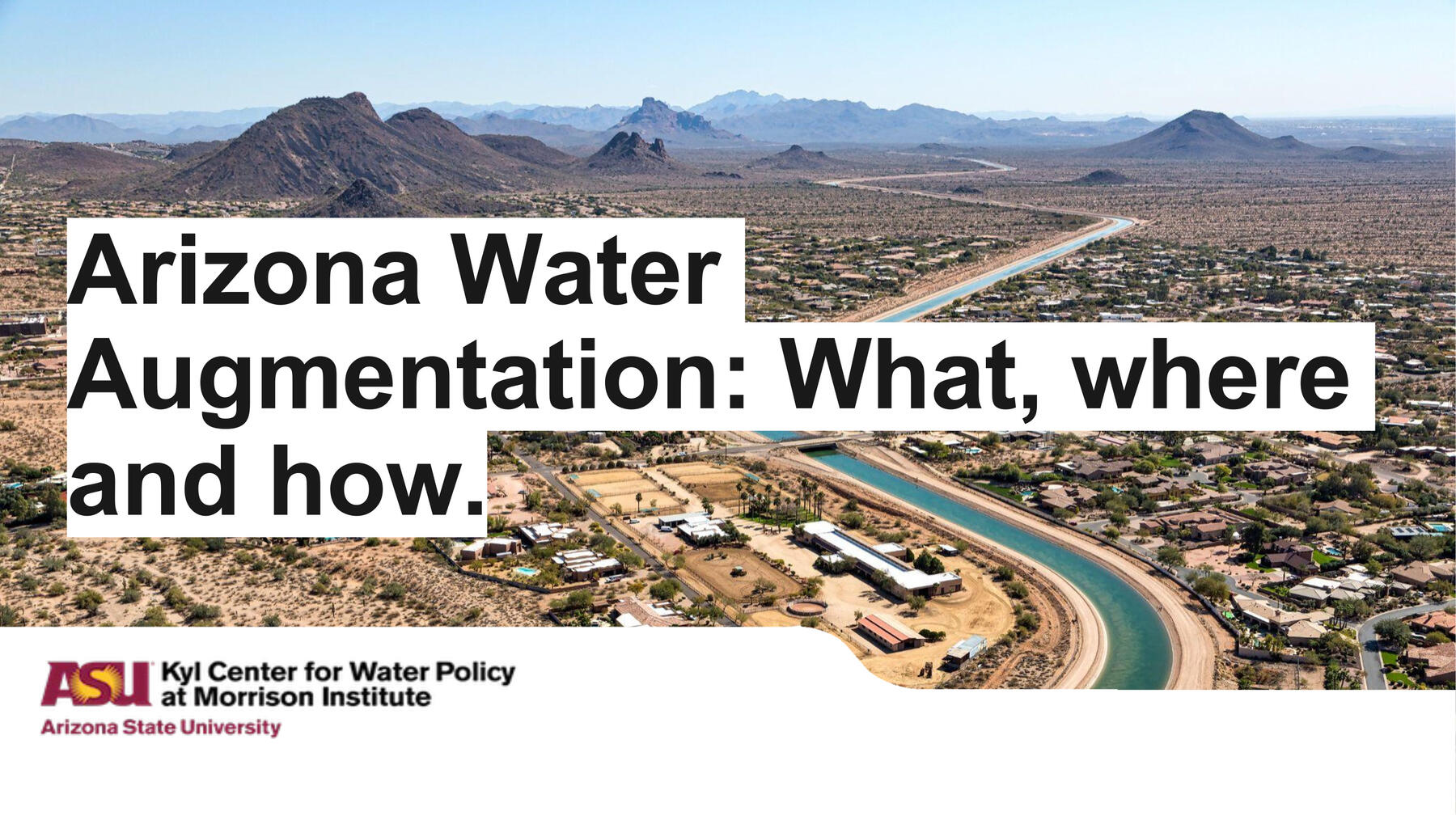
Arizona Water Augmentation: What, where and how.
Part 1: What is water augmentation?
augment (verb): to make greater, more numerous, larger or more intense
augmentation (noun): the act or process of augmenting something
Merriam-Webster.com. Merriam-Webster, 2022.
The amount of water on our planet is fixed and continually moves through a cycle of evaporation, condensation, sublimation, precipitation, transpiration, runoff and infiltration into the ground.* We can’t really make more water. We can move it, change its use, alter its quality and store it for future use.
From time to time, local and regional water providers, states or even entire sections of the country need additional water supplies to meet water needs. Water augmentation refers to the effort to acquire additional supplies for a current or future group of water users.
Water augmentation generally involves the following:
- Moving water from one place to another (e.g., importing Colorado River water into Central Arizona),
- Improving the quality of an existing water supply to make it available for a different purpose (e.g., treating wastewater or desalinating seawater),
- Converting from one use of water to another (e.g., fallowing farm lands so that water can remain in a stream to support environmental habitat),
- Capturing water that would otherwise flow somewhere else (e.g., harvesting rainwater or trapping moisture in the air),
- Storing water for future use (e.g., behind dams or underground in aquifers) or
- Some combination of these things.
Water augmentation projects can be complicated and controversial. Projects to re-allocate water, transport it from one place to another or hold water back from where it would otherwise flow often involve large infrastructure investments, complex financing and new governance structures. Augmentation projects involve trade-offs for communities, economies and the environment. In this series, we will explore some of the considerations involved in water augmentation projects.
The Augmentation Concepts page of the Kyl Center’s Arizona WaterBlueprint details sixteen Arizona water augmentation proposals.
*For more information about the water cycle see The Fundamentals of the Water Cycle, U.S. Geological Survey.
This blog series is co-sponsored by the Arizona Water Innovation Initiative, a multi-year partnership with the state led by Arizona State University’s Julie Ann Wrigley Global Futures Laboratory in collaboration with the Ira A. Fulton Schools of Engineering.